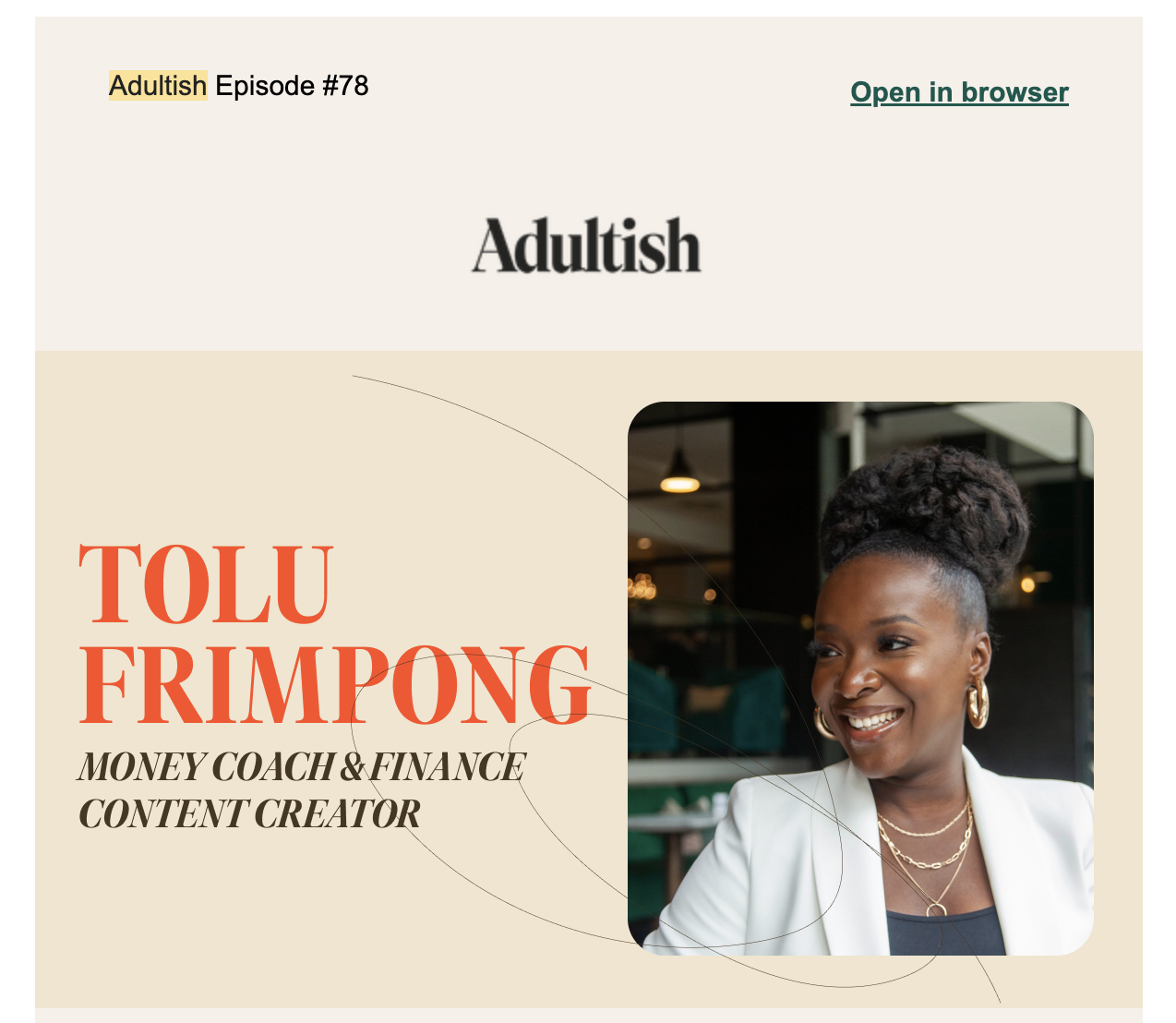If you’re doing research for digital marketing and fintech, it’s likely that you’re in one of these situations:
- Your paid ad strategy is working great, but the necessary funds to scale would require a lot more cash.
- You’ve already invested in digital marketing tactics that have generated plenty of traffic but not enough qualified leads or sales.
- You’re currently testing different lead generation methods, but you’re not sure which ones work best or how much traffic and leads each one has produced.
In this article, we’ll explore what your options are when it comes to digital marketing a fintech company, and how to get the best return on your investment.
- What to keep in account when doing digital marketing as a fintech (with examples)
- Five best digital marketing channels to scale your fintech
- Content marketing: How to get started as a fintech
- How we help fintech companies create high-ROI content at Mint Studios
Note: Looking for a proven process to generate real leads for your fintech? We’re a content marketing agency that helps you acquire customers with your blog. Learn more about what we do.
What to take into account when doing digital marketing as a fintech
In this article, you won’t find the typical advice of “do customer research” and “create a social media account”. Based on our experience helping dozens of fintech companies with their content marketing, here are a few things you should take into account when it comes to digital marketing and the fintech industry.
The channels you invest in depend on whether you have product-market fit or not
What you spend your digital marketing budget on will be different based on whether you have PMF (product market fit) or not. That’s because that will help you understand if you’re at a testing stage, or a scaling stage.
If you don’t have PMF, then your goal is to use your budget to test different channels and see what works best for your company. For example, you could take the Traction approach and allocate $1,000 on 10 different channels. Once you see a channel that works well, you can then invest more.
Once you’ve nailed product-market fit, you can switch gears and allocate most of your budget to the channel that’s working for you (although you should also make sure to diversify and continuously look for other channels).
Here’s an example:
Content marketing is about understanding who your best customers are and answering their questions. That means it’s very hard to do if you don’t have any customers or not enough to say that you have PMF.
If you’re still at the early stages of your company and don’t have PMF, then your content marketing strategy might be more focused on updating investors, telling people about your company story and what it’s like to work with you.
Once you do have product market fit, you can then focus on creating content that is Bottom of the Funnel and will help with customer acquisition.
Read more: Fintech Content Marketing: Everything You Need to Know
Make sure to start by targeting prospects who are in-market (bottom of the funnel)
A lot of marketers will first start by creating content that targets those who are at the Top of the Funnel – in other words, people who don’t know they even have a problem yet.
Although you will eventually target them, you’re much better off starting by targeting those who already know they have a problem, what the solution is and are actively looking for it. There is a much higher chance that they’ll convert, which means you can learn more about your customers, which will then make it easier to create an effective digital marketing strategy.
Whether you’re investing in PPC, content marketing or paid social – it makes sense to start with those who are ready to buy – and then work your way up the funnel.

5 best digital marketing channels to scale your fintech
What are the best digital marketing channels to test your messaging and acquire customers? Here are five of them:
#1: Content marketing & Search Engine Optimisation (SEO)
Since we specialise in content marketing, it makes sense for us to start with this channel.
As a fintech, content marketing plays a huge role in your marketing mix for a few reasons:
- Trust: you’re managing people’s money, so your prospects and customers absolutely need to trust you.
- Education: a lot of financial topics (like taxes, mortgages, etc) are not taught in school or are relatively complex. You can’t sell a tax app (B2C) or open banking solution (B2B) if your prospects don’t know anything about these topics – so you need to invest a lot more into education.
- Customer experience: younger generations expect the same UX as they get with apps like Uber and Instagram – and this is becoming more and more true in B2B as well. Fintechs need to be able to offer an intuitive experience.
However, many marketers do fintech content wrong. They start with Top of the Funnel content, and they treat content marketing as a brand awareness function. When in reality, content marketing can bring direct leads and sales, as well as building brand awareness.
If you have a huge budget, then it might make sense to go full on with Top and Bottom of the funnel content. But if you have a restricted budget, then building trust with those prospects who are already in-market will allow you to get results sooner, start talking to customers sooner and therefore build a more accurate content strategy.
We go into more detail in this article: The Content Tower of Pisa: Why Fintech Content Programmes Fail
A note on Answer Search Optimisation (AEO)
Content marketing is no longer just about ranking on page one. Increasingly, it’s about being the source that AI tools, voice assistants, and answer engines use to respond to real-world questions.
This shift is being driven by large language models (LLMs) like ChatGPT, Perplexity, and Google’s Search Generative Experience (SGE). These models don’t just crawl the web, they generate answers by pulling from high-authority pages that are clear, structured, and directly answer specific questions.
Still, many of the tactics used to optimise content for search are the same ones that work for AEO:
- Including a clear summary that directly answers the main question.
- Using structured formatting like bullet points, numbered steps, and FAQs.
- Writing with natural, conversational phrasing to match how people search or speak.
If you’re doing SEO well, you’re already laying the foundation for AEO. In fact, according to data from Authoritas, over 84% of SGE-generated answers include one of the top three organic search results. If your content already ranks well, you are far more likely to be used as a source in AI-generated answers.
What you do need to do differently is consider the intent and precision of your content.
Search engines rank pages. Answer engines select excerpts. That means your summaries need to be tighter, your structure needs to be more predictable, and your content needs to deliver a definitive answer fast.
At Mint, we’re constantly experimenting with how to give our fintech clients an edge in this new environment.
If you want to follow these insights in real time, consider signing up for our newsletter. We’ll be sharing live experiments, best practices, and actionable advice as AEO reshapes how fintechs meet their marketing goals
Case studies: Financial technology companies doing content marketing right
Argyle: B2B enterprise content marketing
If you look through Argyle’s content, you’ll find advanced topics that matter to their readers like:
- Streamline Mortgage Verifications in 24 Hours: Efficient, Cost-Effective VOI & VOE
- Using Non-FCRA Data for Income & Employment Verifications
- How Alternative Data Sources Give More Consumers a Chance at Credit
According to ex-Head of Marketing Eva Sasson, Argyle always bases their content marketing on conversations they have with clients.
“When Argyle came on the market, it was a completely new concept. We had to create a new vocabulary to talk about what it does, so content marketing was an absolute necessity. We use it to produce detailed educational content to help users. Our goal with content marketing is to make our users’ job easier and make them the heros at their company.”
Argyle is a great example of a company that creates content based on customer research and that is written for the knowledge level of their prospects.
You can listen to how Argyle cuts through the noise with their content and account-based marketing on the Market Like a Fintech Podcast.
Spendesk: B2B and B2SMB content marketing
Spendesk uses content marketing to rank for high-value keywords like:
- Spend management solution
- Business travel management tools
- Accounting automation software system
You can see their articles here:
- 10 Top Spend Management Software Solutions for 2023
- 10 Excellent Business Travel Management Tools for 2023
- 10 Smart Accounting Automation Software Systems to Try
They target search terms that attract buyers looking for the right tool to their articles instead of landing pages. With articles, they can go into more detail and give the reader what they want.
Wise: B2C content marketing
Wise has plenty of room in their marketing budget for other strategies, but they haven’t ignored highly cost-effective tried-and-true content marketing moves like creating content directly connected to their competitors.
If you search for information about how to open or close accounts at most well-known banks, a Wise article usually pops up. You can google any of these and see for yourself:
- How to close a Wells Fargo bank account
- How to open a bank account with Westpac
- St George bank international transfer fees
It’s the perfect moment to introduce Wise to the reader. Someone looking to open or close a bank account is probably in need of a new bank account (which Wise can provide).
Read more about this tactic: Why You Should Write About Your Competitors as a Fintech Company
Channel #2: Pay-per-click (PPC) Google ads
Search engine marketing (SEM) also known as PPC Google ads can quickly attract visitors to test your messaging and hopefully bring people into your sales funnel.
One fintech that has done an excellent job of targeting buyers with PPC ads is Revolut. Using SEM competition tools, you’ll discover they dedicated a substantial part of their budget to Google ads - especially competitors' keywords with high purchase intent like:

We assume their campaigns worked well for them because they continued using them (and even increased their usage over time).
Channel #3: Email marketing & automation
In the B2C world, one fintech company that does a great job with email marketing is Nude. Every week, they send a newsletter called Adultish, where they share relevant information for people buying their first home:

In the B2B world, one company that does newsletters well is Cognism. In terms of email campaign automation, it’s harder to find examples. However, in this webinar with two other financial services companies, the marketers explain what has and has not worked for them with email automation:
Panel Event: How Important is Email Marketing in B2B Fintech?
Channel #4: Organic social media
Surprisingly, very few financial services firms use organic social media to its full potential despite how much we know it can accomplish for marketing teams with small budgets. Here are some examples of fintech brands doing a good job with social media:
Nubank: B2C social media marketing
If you’re wondering how to succeed on platforms where anyone can share their frustrations about your product openly, take a look at Brazilian fintech Nubank.
No one expected this neobank to put most of their marketing efforts into social media as a customer acquisition and customer service channel. They’ve since grown their follower count to over 9 million across all platforms.
If you scroll through their social media channels, you’ll find customer gripes like any other company – and how their customer service team handles them too. One big difference between Nubank’s social media and others is the size of their team: they have at least 30 people managing their accounts.
We discussed Nubank and 54 other banks around the world with Dave Wallace and Afshan Dadan in What are the banks and fintechs that get social media right on the Market Like a Fintech podcast.
Tilled: B2B social media marketing
It’s rare to find B2B fintechs winning market share with thought leadership social media, but this PayFac-as-a-service does.
Fintech startup Tilled knows exactly what’s on their customers’ minds. That’s why their organic social media content attracts already-sold inbound leads ready to set up their new account.
Founder Caleb Avery says “We started marketing on Linkedin at least seven months before we had a beta product available. It brought us so much good feedback about the beta version, that we postponed our launch to bring a much stronger product to market a few months later.” in this insightful video: What's the Best Way to do Customer Research in Fintech? We Compare 2 Approaches.
Caleb’s constant investment in LinkedIn has paid off: Tilled now gets 54% of their leads organically and has a staggering 59% close rate.
Read more about their strategy: How This Payments Company Gets 75% of Leads Inbound and a 59% Close Rate with Content Marketing
Channel #5: Video, Youtube & podcast marketing
Enterprise level companies usually dominate this channel because of its high cost, but fintechs are showing us what’s possible with smaller budgets:
Public: B2C Youtube, video, and audio marketing
Public.com knew they couldn’t sign up nervous beginner investors to their investment platform with a sales page and a few how-to or 21 ways to X articles on a blog.
So they turned to in-app audio, video and Youtube to educate their investment-shy-but-curious customer base about how to do it wisely.
VP of Marketing, Katie Perry says “On the daily audio shows, we have journalists running them and talking about these financial topics in accessible ways. Around 90% of our investors are long-term. They’re less interested in the intraday movements of a stock, but they might want to hear about a specific sector or have somebody break down the jobs report. We see incredible reception from the community.”
If you check out their Public App Youtube channel or their daily in-app audios and videos, you can stay up-to-date on the markets to make better decisions for your investment accounts.
Listen to our full interview with Public’s VP of Marketing Katie Perry on the Market Like a Fintech podcast: Market like a fintech: Financial education and marketing with Katie Perry
11:FS: B2B Youtube and podcasting
Consultancy firm 11:FS uses YouTubeYoutube and podcasting to keep potential clients and colleagues updated on what’s happening in their industry.
It’s the perfect opportunity to demonstrate their expertise in this niche with:
- Spotlights featuring exceptional talent in fintech
- Deep dives into up-and-coming or evolving tech innovations
- Experts exploring topics the industry cares about
Former 11:FS CCO Eric Fulwiler says, “If you want to add value, you need two things. You need to really understand what you stand for, but then you really need to understand what your target audience cares about. Because good marketing sits at the intersection of those two things.”
Listen to the full discussion with 11:FS’s former CCO Eric Fulwiler and Mint Studios MD Araminta Robertson on the Market Like a Fintech podcast: Where to get started with fintech influencer marketing with Eric Fulwiler
Content marketing: How to get started as a fintech
If content marketing is something you’re looking to invest more in, here’s a step-by-stepstep by step process that we use to help fintech companies acquire six-figuresix figure customers with content.
1. Use paid ads to test your messaging
If you’ve just started using digital marketing to find new customers, you’ll learn the most quickly with paid ads on search engines and social media. Use paid advertising to:
- Find out who’s most attracted to your product.
- Experiment with your messaging to different audiences.
- Calculate your customer acquisition costs (CAC).
- Predict future revenue and drive growth.
2. Check your product-market fit.
If you haven’t found your product-market fit yet, it ought to be your top priority. Use any and all methods to do customer research and find the best market fit for your product with:
- Paid search and social media ads.
- Email marketing if it makes sense for your product.
- Customer interviews.
- Product, customer success, and sales team interviews.
If you’ve got a great product-market fit, content marketing will help you scale tremendously. Keep your eye on your best customers as new competitors appear and the market evolves.
3. Create a content strategy based on customer research and Bottom of the Funnel content
If you’ve done an excellent job with your customer research and product-market fit, you’re ready to explore one of the most cost-effective digital marketing channels: content marketing.
A lot of marketers will start by creating content that is Top of the Funnel – in other words, for brand awareness. But we’ve argued many times before that it makes more sense to actually first create content for people who already know what their problem is, what the solution is and are actively looking for it. In other words, the bottom of the funnel.
You’ll get results more quickly, and you’ll start learning about your customers more quickly as well. Once you’ve targeted the bottom of the funnel, then you can work your way up. You can read more about BOFU content and how to content strategy here:
Read more: What is BOFU (Bottom of the Funnel) Content and Why Is it Important?
4. Commit to writing content for the level of your reader
It’s super important to create a content strategy that targets real prospects: in other words, people who could genuinely become a customer one day. Too many companies invest a lot into creating beginner guides and white papers – but those will take years before you’ll see results.
That’s why it makes more sense to start by creating content that targets your ideal customer. As a B2B fintech, that might be a product manager, a Head of Payments or a CTO. These are people who are experts and have advanced knowledge of a specific topic.
When creating content, you want to make sure you create content for them, and not everyone. This is a lot easier when you’ve spent time understanding who your best customers are and have done a content strategy targeting your ideal customers.

When you write advanced content, they’ll see you as an expert – which means they’re a lot more likely to reach out and take you seriously.
Some examples of advanced content we have written are:
- PayTo: How to prepare and plan for it (with use cases and examples!)
- Direct Debit API: How to set one up (and when to use one)
- How to Extend Your Startup Runway (Without Giving Up Control)
4. Create content based on interviews with experts
However, if you want to create content that is advanced and written for your ideal customer, you need a writer who can write at that level.
In our experience, people are either great writers, or experts in a specific topic. And if you ask a writer to write an advanced piece of content based on desk research, you’ll end up with regurgitated content – much of what’s online currently. Not only that, but the writer won’t know the customer pain points in-depth, and they might not know enough detail about your product.
Instead of finding someone who is both (which can be very expensive), one way past this is to ask your writer to interview the experts on your team. This allows the writer to:
- Ask a salesperson about the customer’s potential pain points
- Ask a product person about how the product works in detail
- Add original content that only your team would know and therefore stand out as a subject matter expert and thought leader
Here are some examples of more advanced content we’ve been able to write, only because we interviewed someone on the company team:
- Apply for a Sole Trader ABN Online (In Under 10 Minutes)
- Split payments API: How Zai's API can help you set up a custom payment workflow
- Top Direct Debit Solutions in Australia (We Compare 4!)
Read more: Why You Should Create Content Based on Interviews With Experts
5. Track your results over time
One of the biggest mistakes in fintech content marketing is relying only on metrics like organic traffic or clicks. These numbers can be misleading, and increasingly irrelevant.
For example, recent data shows that when Google AI Overviews appear at the top of search results, organic click-through rates drop by around 34.5% on average. That means users are getting AI-generated answers without ever visiting your site, so measuring by clicks alone is no longer reliable.
To truly understand the impact, you need to focus on sales-related outcomes, such as demo requests, pipeline contribution, SQLs, and revenue attribution. Tools like HubSpot, Google Analytics, and CRM integrations are essential starting points.
But even tracking conversions has become more complex.
With private browsing, cookieless future trends, multi-device journeys, and LLM traffic in play, attribution isn’t a straight line anymore.
Instead, shift toward more nuanced methods:
- Multi-touch attribution models that give credit across the full content journey
- Influence-based reporting, mapping which pieces of content appear most during converted journeys
- Self-reported attribution (“How did you hear about us?”) on form fills
- Content audits during deal reviews to identify recurring content touchpoints
These approaches give you a clearer view of how content truly supports pipeline growth, not just traffic.
It’s crucial to get attribution right for two main reasons:
- Helps you secure more budget by proving content’s role in revenue
- Empowers you to double down on high-impact content rather than chasing vanity metrics
Read more: How Many Leads Can You Generate with Content Marketing?
How Mint Studios helps fintech companies create revenue-focused content
At Mint Studios, we specialise in helping fintech companies use content marketing to establish themselves as experts and acquire customers.
Here’s how:
Create a content strategy that brings in leads and sales, not just traffic
The process we described above is the process that we use to help fintech companies create content that brings in deals and sales, and not just traffic.
Our methodology is:
- A content strategy based on customer research and focused on Bottom of the Funnel
- Content for the level of your reader and focused on your product
- Content based on interviews with experts
- Content results that can be tracked through a variety of methods
This is the approach that gets our fintech clients ranking on Google for high-value keyphrases, writing content that is expert-based an advanced, and that ultimately brings in sales.
You can read more about our methodology here: Fintech Content Marketing Framework
Create content that is advanced
One of the unique challenges that fintech companies face is being able to create content that is at the right knowledge level of their audience.
We’ve written highly technical fintech articles and we know our way round payment orchestration, APIs, payment methods and a lot more. Based on our approach of interviewing experts, we’ve been able to create advanced content like the following:
- Direct Debit API: How to set one up (and when to use one)
- 3DS2: Everything you need to know and how to prepare for it
- Multi-party payments: How they work and when to implement them
We take care of everything content-related
The ultimate goal with a digital marketing agency is that they operate as an extension of your marketing team. To make that a reality, we allocate two people on our team: a strategist—who is your point of contact— and a writer, who take care of the content on your website.
Since it’s a small team, it allows us to be flexible, learn quickly about your product and customers, and move quickly according to trends.
We also take care of the entire content process: strategy, interviewing, writing, editing and publishing. This allows you to focus on other marketing camapigns, while we’re creating high quality content that drives growth, and gets your product seen in the right places.
We stay ahead of industry and technology shifts
The fintech and marketing landscape is constantly changing, from how buyers discover content to how AI is reshaping search. At Mint, we’re actively monitoring developments in search algorithms, AI-generated answers, attribution modelling, and emerging LLMs like ChatGPT and Perplexity.
We’re testing how these trends affect visibility, lead generation, and SEO, and applying those insights to every strategy we build.
We believe it’s not just about keeping up. It’s about using these tools to create new opportunities for growth.
The same tools disrupting traditional marketing can also accelerate growth. At Mint, we’re helping fintechs stay discoverable by ensuring their content ranks not just on search engines but in LLMs like ChatGPT, Perplexity, and AI-powered search experiences.
Our goal is ensure our clients are positioned as the go-to source in a search landscape increasingly dominated by AI, not just organic rankings.
We specialise in fintech
Finally, we live and breathe fintech. We only work with fintech companies, which means we’ve already seen what does and doesn’t work in the fintech space (which means we often know more about fintech and payments than our clients!).
Our founder, Araminta, is heavily involved in the fintech community: she runs a 2,500+ fintech marketing Slack group and hosts regular events in London and New York.
We’re total fintech nerds, which allows us to write real advanced, comprehensive content for our clients as a fintech marketing agency.
There you have it: a summary of what you need to know about fintech digital marketing, and a blueprint to get started with fintech content marketing. Want to find out whether fintech content marketing might be what you need? Learn more about what we do.











